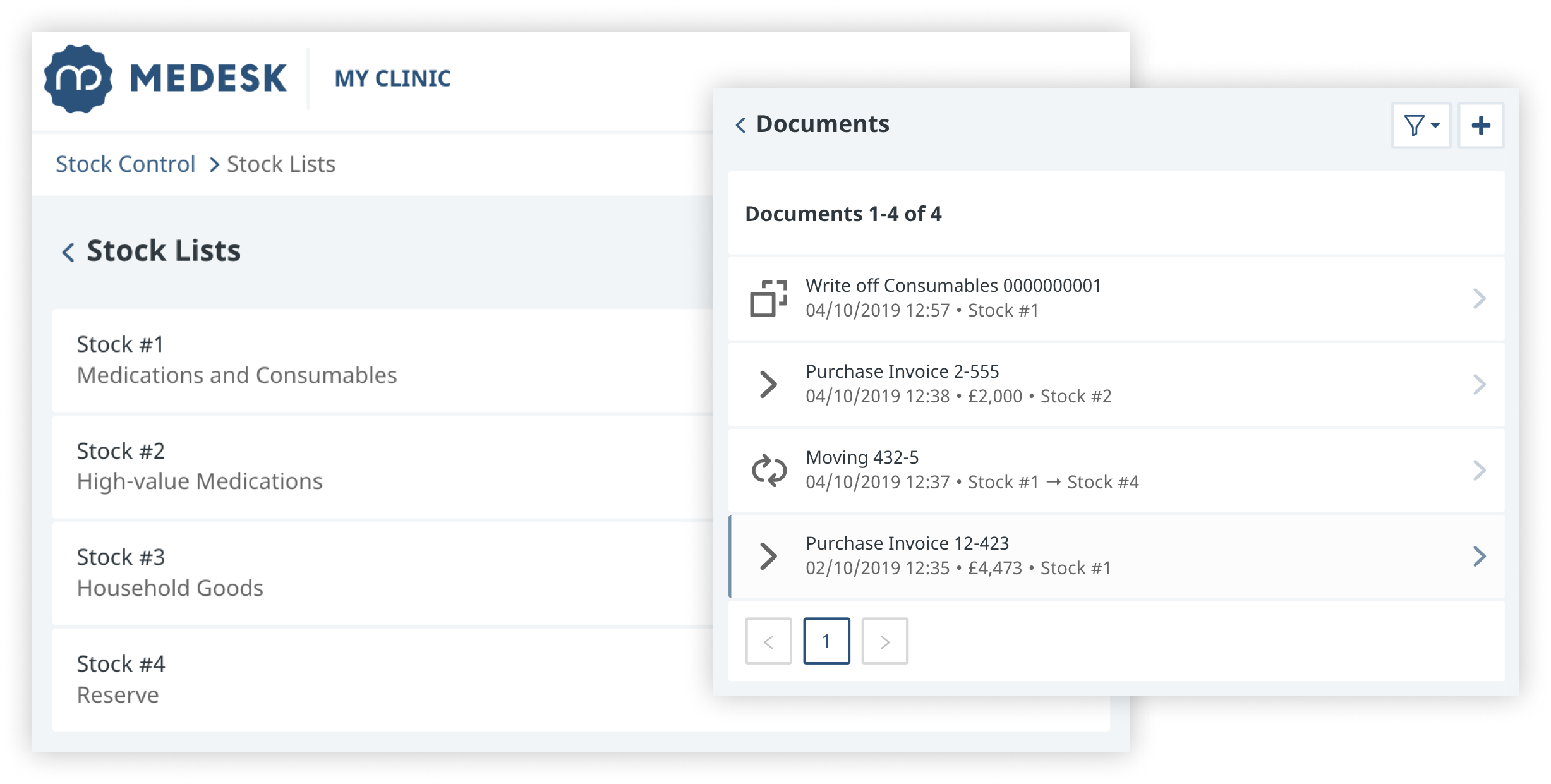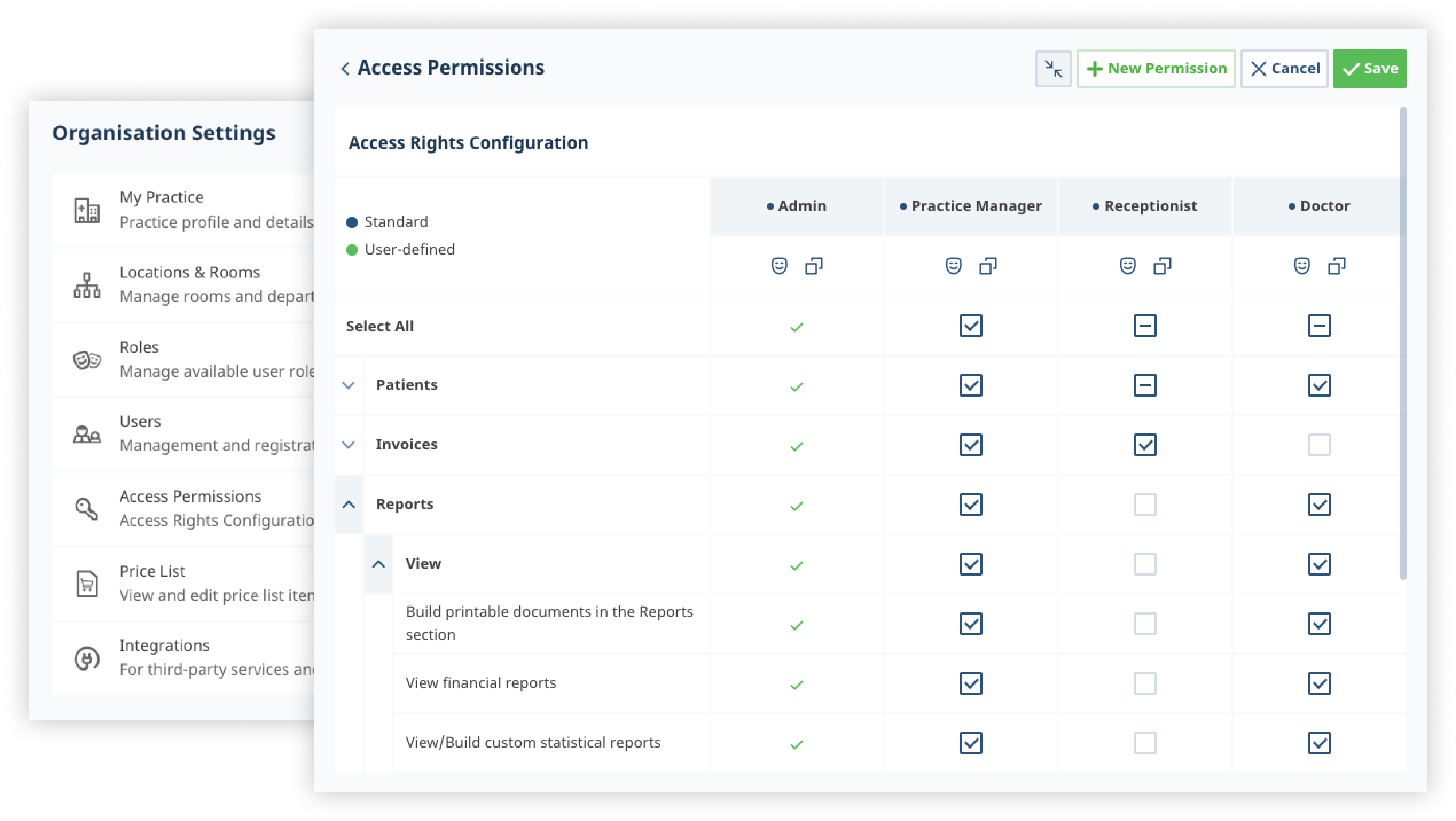Is an inventory management solution necessary for a medical clinic?
Certainly, the need for a medical clinic to have a programme for inventory management is crucial. This is primarily for overseeing the distribution of medical supplies within organizations and managing the stock of pharmaceuticals. If your clinic has multiple branches, it's highly advantageous to utilize a centralized stock management system capable of handling extensive information.
Effective inventory management plays a pivotal role in ensuring that healthcare facilities possess the correct items in the right quantities at the appropriate times. This, in turn, leads to enhanced patient care, control over costs, and an overall improvement in operational efficiency.
The functionalities of such a programme should encompass the ability to track the movement of goods along the "stock-doctor-patient" supply chain. Additionally, it should provide comprehensive reports detailing the availability of specific items in stock over specified periods.
We will explain which features are worth considering when choosing software for healthcare providers in 2025.
Learn how to simplify your practice workflow and free up more time for patients with Medesk.
Open the detailed description >>The List of Functions
Check if your software has the following features:
- Real-time tracking
- Integration with Electronic Health Records (EHR)
- Multi-Location support
- Barcode and RFID support
- Forecasting and demand planning
- Supplier management
- Mobile accessibility
- Expiration date tracking
- Cost tracking and reporting
- Audit trails and compliance
- User permissions and security
- Artificial intelligence (AI) and machine learning (ML) integration
Found any matches? Let's delve into how each function simplifies workflows in medical practices.
Real-time tracking
The function offers immediate access to see how much inventory is available, enabling providers to check stock levels right away and avoid overstocking and stockouts.
You can easily create reports and gather statistics with just one click. Keep an eye on expenses in different categories, departments, and offices. Streamline costs and plan purchases. Minimize errors by reducing human involvement in reporting and documentation.
Medesk helps automate scheduling and record-keeping, allowing you to recreate an individual approach to each patient, providing them with maximum attention.
Learn more >>At any moment, you can check the availability of goods in the warehouse and plan timely replenishment.

Integration with Electronic Health Records (EHR)
Integration shows which medications have been prescribed for each patient. This allows tracking the prescription history and the cost of treatment for a specific patient, considering the prices of the drugs. During appointments, you can instantly check the available medications in stock and make informed decisions based on the patient's needs.
Automated work with the stock module and EHR reduces the risk of medication errors. You can cross-reference patient records with the available medications, ensuring that the correct drugs are administered to the right patients. And all of this is possible within a single interface.
Multi-location support
Inventory management programmes make it easier to handle multiple locations or branches for organizations with diverse healthcare facilities. Administrative staff can oversee and control stock levels, reorder points, and other inventory parameters from a central location. And it doesn't matter how many branches your clinic has because the system will provide consolidated reports that give a comprehensive view of the entire inventory.
Barcode and RFID support
Thanks to this feature, you minimize manual data entry errors. Scan codes and tags to obtain accurate information about the POS of each item. Barcode scanning allows for the swift processing of a large number of products, which is relevant for large clinics and vendors. When you scan items, the inventory system updates instantly and provides precise details on the location and status of each item.
For organizations dealing with sensitive or high-value items, RFID tags can be employed to bolster security by preventing unauthorized access.
Forecasting and demand planning
With the help of software, you can accurately predict future demand. How does this happen?
Inventory systems store past information about product sales, consumption, and usage patterns. Analyzing this data, the system reveals trends, seasonal changes, and other patterns in customer behavior. You compare forecasting with the current state of your stock and make decisions about future replenishment.
For instance, if a product typically has higher demand during specific months, the system can automatically adjust the forecast for those months accordingly.
Companies use inventory systems to model potential scenarios by changing factors like order quantities or lead times. By doing this, they gain insights into the potential impacts on future demand.
Supplier management
This includes order management (creating and sending purchase orders), making the procurement process more efficient, automating reordering, and turnover analysis. This information is a key metric for evaluating how effectively a company handles its inventory.
Good inventory software should give accurate and up-to-date details about what's been sold, bought, and left in stock. Using this information, the software can automatically work out how fast items are being used up.
The results from this analysis are used to organize the inventory based on different types of products, sections, or places. By regularly checking and looking at the data, inventory systems help find things that are not selling well or are getting too old. This information is crucial to avoid having too much stock that you don't need. An asset management software solution can further streamline these processes by ensuring that all assets are tracked, maintained, and utilized efficiently.
Discover more about the essential features of Medesk and claim your free access today!
Explore now >>Mobile accessibility
Pay attention to whether mobile versions of the software are available for Android and iOS. On-the-go management is particularly helpful for staff who need to move around the facility or work remotely.
You can use your smartphone camera to scan barcodes, which is also very convenient. The use of mobile devices reduces the need for dedicated hardware or terminals. This helps save money significantly.
Expiration date tracking
This feature helps keep track of the expiration dates of medical medications and ensures compliance. Thanks to automation, you won't prescribe expired items to the patient, saving yourself from legal disputes and problems.
Cost tracking and reporting
You can analyze costs, track spending, and generate financial reports related to inventory management. The system maintains a detailed transaction history, recording every movement of items in and out of the inventory.
Use programmes to calculate the cost of goods sold (COGS) and draw conclusions about profit. If needed, consider adjusting pricing strategies. Knowing the cost of supply chain management allows you to plan budgets, optimize stock levels, and generate reports with just one click.
Some practice management software now features a user-friendly inventory management tool designed for tracking consumables. It allows you to effortlessly monitor all incoming medications and supplies during appointments. You have the flexibility to set up an unlimited number of stock categories tailored to the specific needs of your clinic and easily transfer items between them.
Moreover, you can mark certain items as products and sell them independently of appointments. When these items are sold, the software automatically generates a sales invoice and updates the inventory. You have the convenience of obtaining real-time information about the cost of materials and services, enabling you to generate comprehensive statistics.
Audit trails and compliance
Each transaction is associated with a specific user or role. That’s how inventory control enhances user accountability. This is crucial for audit purposes, as it allows for the tracking of who performed what action within the system.
Historical data access allows auditors to review past transactions, adjustments, and stock movements. Inventory systems can store and document the organization's inventory management policies and procedures. During an audit, these documents serve as evidence that the organization has established and adhered to standardized practices.
User permissions and security
Medical inventory software manages who has access to inventory data among the staff. It uses the Role-Based Access Control (RBAC) principle: you can give specific roles to users depending on their tasks.
Use various user authentication methods, like passwords, multi-factor authentication, or biometrics. Modern programmes use encryption protocols to keep data safe when it's sent or stored.

Artificial Intelligence (AI) and Machine Learning (ML) integration
In the next 2-3 years, we can expect a boom in the use of AI in various fields, including AI and ML algorithms for inventory tracking in the healthcare industry.
AI and ML algorithms are already being used to analyze data and make predictions about consumer demand for goods, as well as for dynamic reordering. ML helps predict potential issues, such as risks in the supply chain, changes in demand, and shifts in usage patterns.
ML algorithms can analyze market conditions and competitor pricing to recommend dynamic pricing strategies. This helps organizations adjust pricing in response to changes in demand, market trends, or external factors. AI can help identify anomalies in inventory data that may indicate fraudulent activities or theft.
The integration of AI and ML in inventory management systems enables organizations to move beyond traditional rule-based approaches, fostering adaptability, efficiency, and responsiveness to dynamic market conditions. The continuous learning capabilities of ML ensure that systems improve and adapt over time, providing sustained benefits in inventory optimization and overall supply chain management.
Summing Up
The provided list of functions acts as a thorough guide for assessing inventory management solutions. It emphasizes important elements such as real-time tracking, integration with EHR, multi-location support, and other key features that you should take into account when choosing software for healthcare organization.
Software options offer different sets of functions and modules. Identify 3–4 of the most crucial features for your clinic and choose software that aligns with your wish list.
Need assistance in selecting practice management software? Visit our blog. We provide reviews of prominent PMS solutions in the UK and internationally, saving you time on product analysis.


